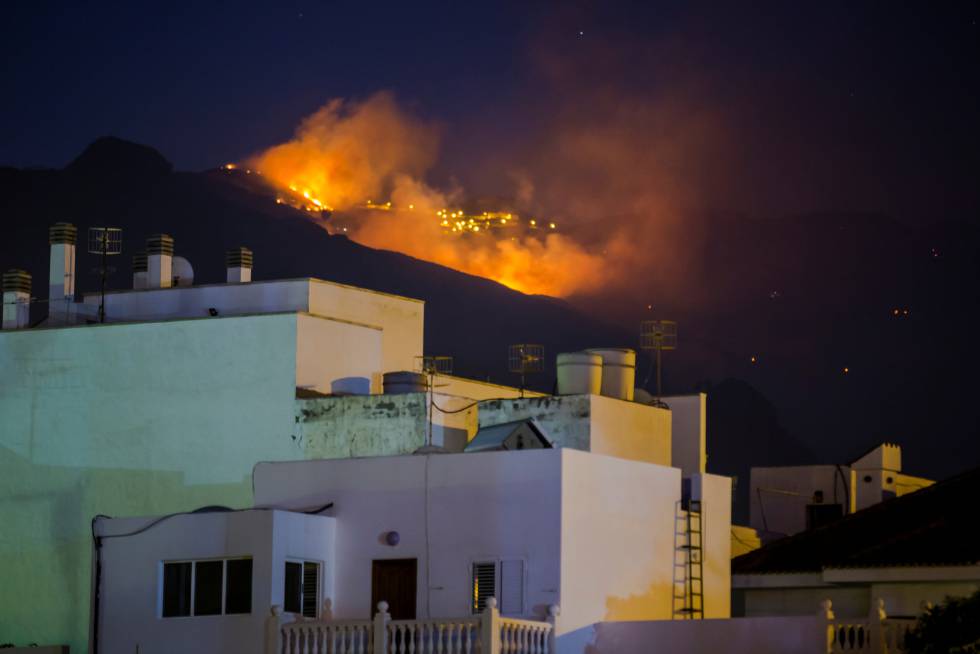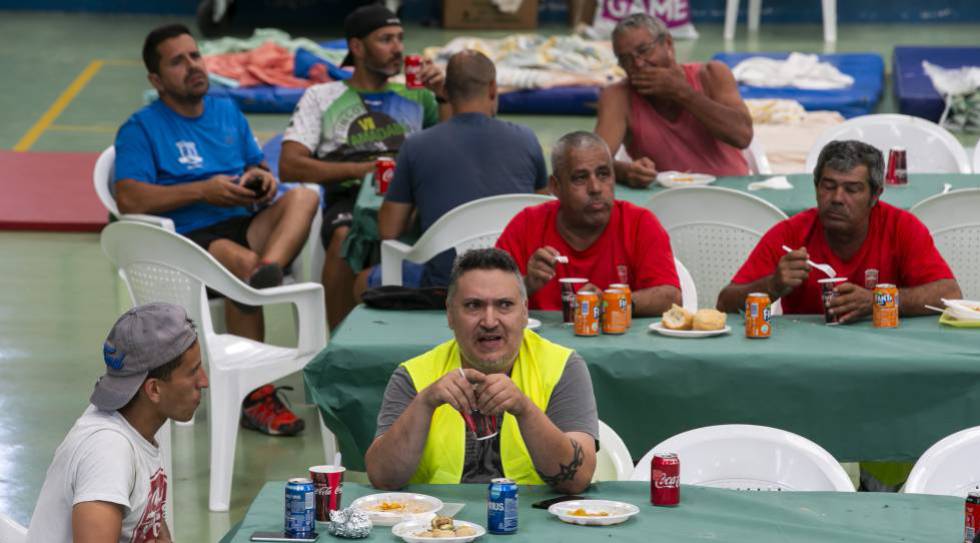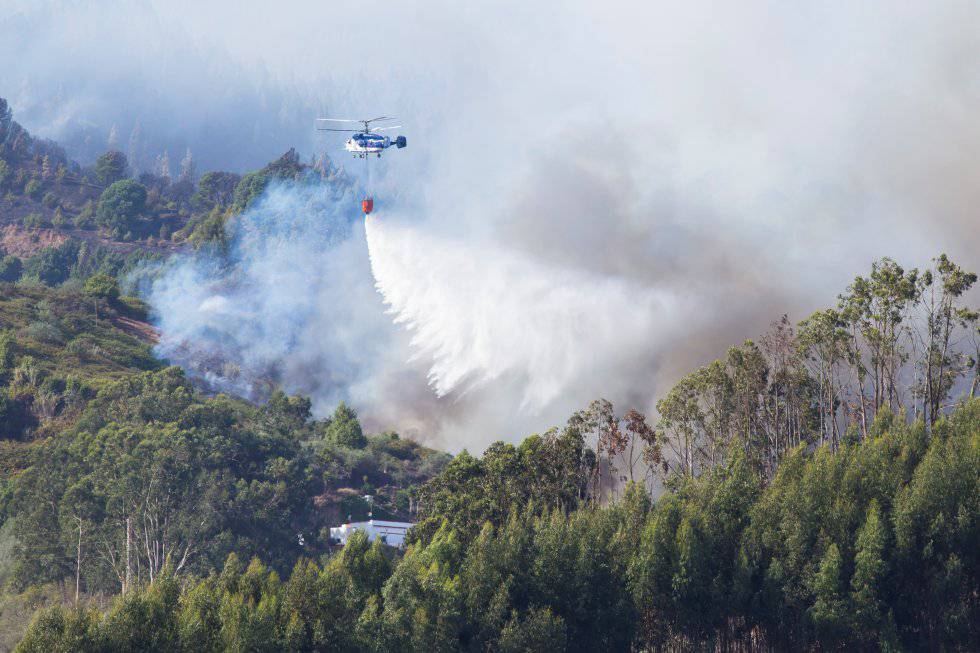The blaze has begun to die down, according to authorities, after razing 10,000 hectares and forcing 9,000 people from their homes.

The fire that broke out in Gran Canaria on Saturday
has begun to die down according to Ángel Víctor Torres, the regional
premier of the Canary Islands. Some 200 firefighters worked into the
night to combat the fire, while 247 members of Civil Protection were on
hand to assist the affected neighborhoods.
A
notable drop in temperatures and improved wind conditions have helped
firefighters contain the blaze at various points but the fire remains
unapproachable in several areas. On Monday, the perimeter of the affected area grew from 60 to 75 kilometers.
The blaze has razed 10,000 hectares of land since it broke
out on Saturday, making it the worst fire to hit Spain in six years.
The
flames originated in the municipality of Valleseco and burned out of
control for three days, fanned by the high temperatures and poor
condition of the mountains, which are overrun with weeds and dry
vegetation, explained Agustín Argulo, a forestry technician from the
Castilla y León region.

A member of the public with the initials A. M. has been evacuated twice: the first time was 10 days ago when a fire broke out in Artenara,
and a second time on Saturday afternoon. “
I’ve moved past rage and now I
am at the stage of resignation and acceptance: the disaster is done,
but right now we have to be calm,” he said.
The fire forced the evacuation of around 9,000 people from
more than 50 towns and villages on the Canary Island, located off the
northwestern coast of Africa. From the cemetery in Monaña Alta, locals
gathered to watch the fire burn. “It looks like it is moving slowly, but
it is devouring the entire mountain,” said Paca Déniz, who had just
been evacuated and was watching as the flames closed in on his home.
The fire that broke out in Gran Canaria on Saturday
has begun to die down according to Ángel Víctor Torres, the regional
premier of the Canary Islands. Some 200 firefighters worked into the
night to combat the fire, while 247 members of Civil Protection were on
hand to assist the affected neighborhoods.
A
notable drop in temperatures and improved wind conditions have helped
firefighters contain the blaze at various points but the fire remains
unapproachable in several areas. On Monday, the perimeter of the
affected area grew from 60 to 75 kilometers.
PUBLICIDAD
The flames originated in the municipality of Valleseco and burned out of control for three days
The blaze has razed 10,000 hectares of land since it broke
out on Saturday, making it the worst fire to hit Spain in six years. The
flames originated in the municipality of Valleseco and burned out of
control for three days, fanned by the high temperatures and poor
condition of the mountains, which are overrun with weeds and dry
vegetation, explained Agustín Argulo, a forestry technician from the
Castilla y León region.
The fire forced the evacuation of around 9,000 people from
more than 50 towns and villages on the Canary Island, located off the
northwestern coast of Africa. From the cemetery in Monaña Alta, locals
gathered to watch the fire burn. “It looks like it is moving slowly, but
it is devouring the entire mountain,” said Paca Déniz, who had just
been evacuated and was watching as the flames closed in on his home.

A member of the public with the initials A. M. has been evacuated twice: the first time was 10 days ago when a fire broke out in Artenara,
and a second time on Saturday afternoon. “I’ve moved past rage and now I
am at the stage of resignation and acceptance: the disaster is done,
but right now we have to be calm,” he said.
Coralia González was also evacuated because of the fire.
She has a cheese farm in Lomo del Palo in Gáldar, and, like her mother
and grandmother, her livelihood depends on the products she makes thanks
to her 111 sheep and 17 goats.
She had to leave the animals in their
enclosure and doesn’t know if they have survived.
Raúl García from Tejada saw his land – and livelihood – go
up in flames in the first blaze, and, like A. M., was evacuated for a
second time on Monday.
He and his family were taken to a shelter in San
Mateo, where volunteers from the local council have not only offered a
place to sleep but also food and company.

The blaze has razed hundreds of hectares of Tamadaba
Natural Park, which is considered one of the best-protected reserves on
the island.
Firefighters were, however, able to stop the blaze from
reaching the Inagua National Reserve.
If conditions continue to improve, some of the evacuated
locals may be allowed to return to their homes, the head of the local
government of Gran Canaria, Antonio Morales, told radio network Cadena
SER.


No hay comentarios:
Publicar un comentario